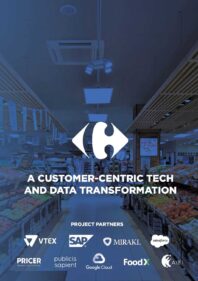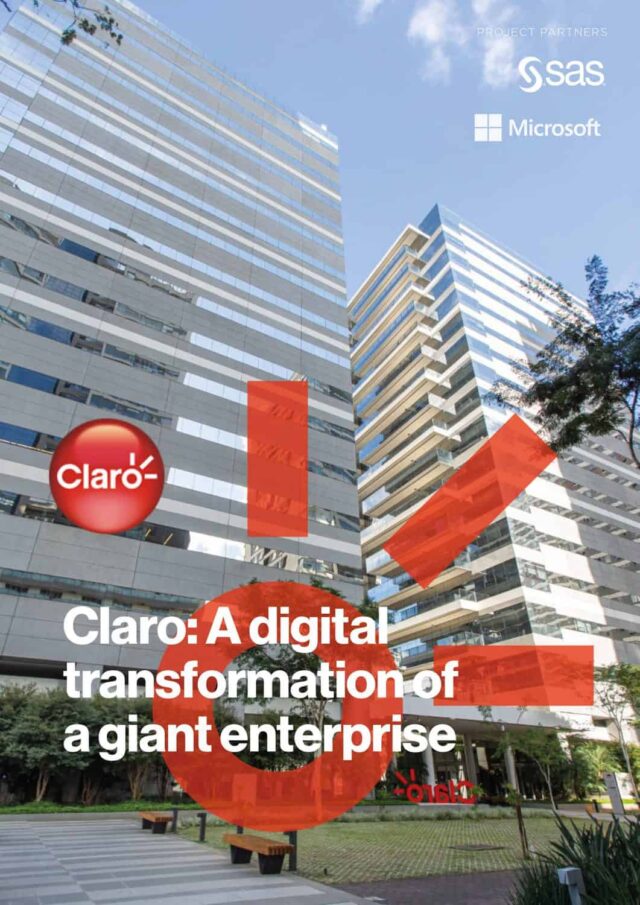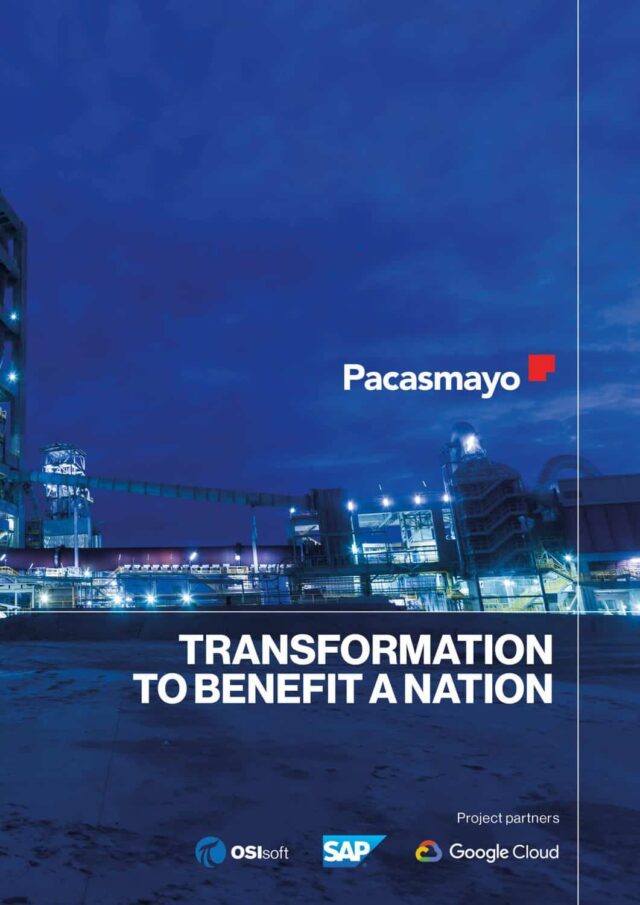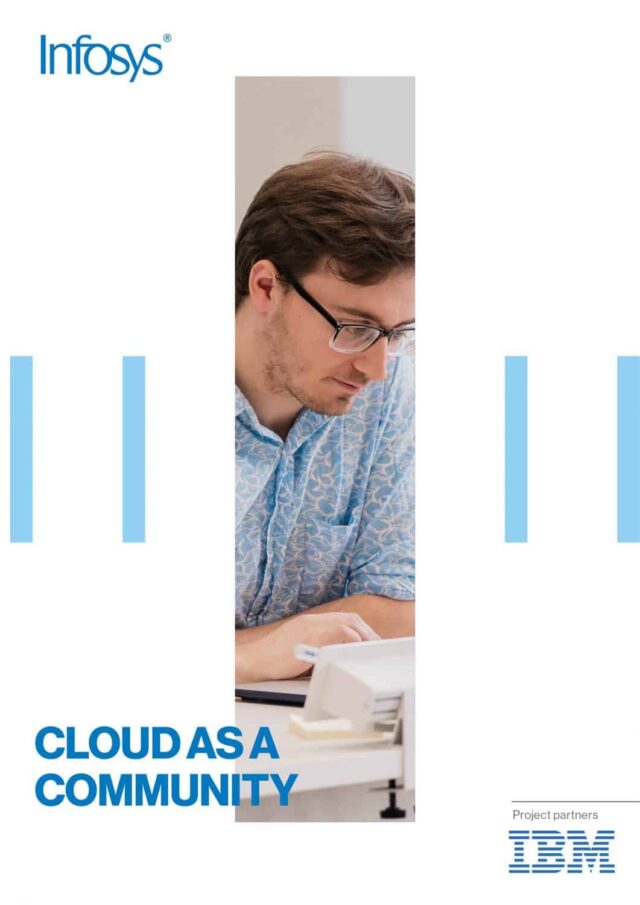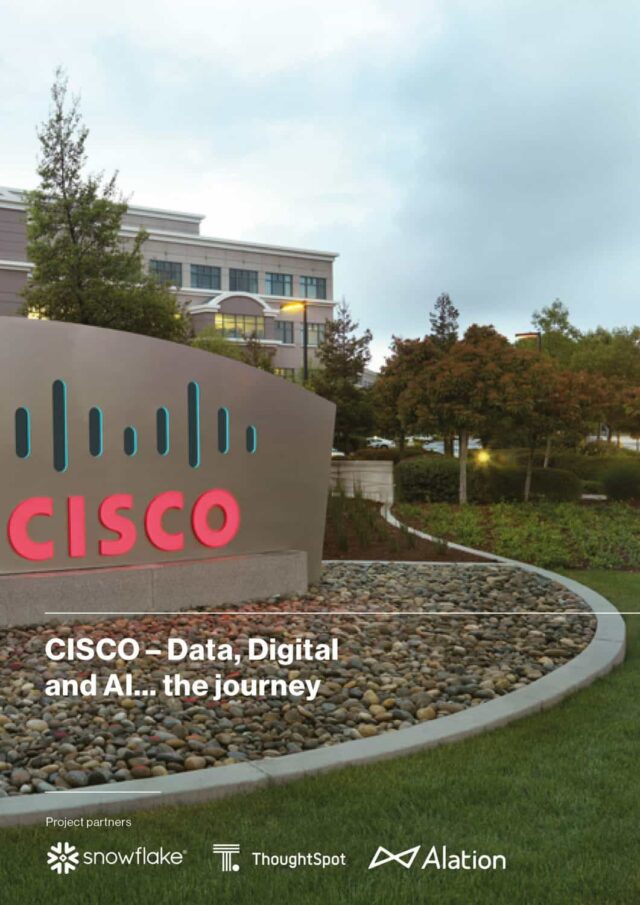We speak to the senior leadership team in charge of Carrefour’s digital transformation to see how the global retail giant is transforming its technology on a massive scale as it evolves into a truly customer-centric enterprise…

There are few enterprises with a heritage and scale enjoyed by Carrefour. The 62-year-old global grocery and retail giant is undergoing enormous change across its numerous territories and grocery formats, and not before time. Sitting, as it does, at a pivotal moment in its history, Carrefour is facing, and meeting, the challenges of size and legacy as it leverages tech and data to transform into a company ready for the challenges ahead.
As online shopping reconfigured the very notion of retail during the early noughties, the writing was on the wall for businesses of every size: adapt or die. But change, although essential, is often feared, resisted or considered politically unpalatable to many business leaders Nevertheless, the situation remains the same. Adapt or die.
Carrefour is a huge global company and the largest retailer in Europe with a name that carries an almost subconscious meaning to those who have grown up with the brand. It was Carrefour that introduced France to the hypermarket concept way back in 1963 when it opened its first megastore in Sainte-Geneviève-des-Bois. Carrefour today is a massive enterprise with 320,000+ employees worldwide, in 12,000+ stores present in over 30 countries including locations like Latin America, Asia, Middle East and North Africa, aside from mainland Europe. Carrefour operations in Brazil and Spain are for instance equivalent to those of a €10bn+ retailer each. The company is France’s largest private employer and represents almost half of the overall business. Today, Carrefour serves 104 million household customers in making 4 billion transactions annually.
Carrefour has embraced a widespread ongoing transformation, as the retail landscape experiences monumental shifts in behaviour. And the person Carrefour looked to, to deliver this incredible programme of change, was the then rather youthful 45-year-old Alexandre Bompard who joined the Group as Chairman and CEO in July 2017. Bompard has a proven track record in delivering change having been at the helm of French retail chain Fnac-Darty. Bompard’s “Carrefour 2022” transformation plan “embodies the goal of bringing eating well – healthy, fresh, organic, local food – to within everyone’s reach”, said Bompard upon its launch. “To become the world leader in the food transition for everyone”.
Strategy is formulated at a global level, overseeing a technology function that employs more than 4,000 people internally notwithstanding contractors and partners. Every year, more than €1 billion is dedicated to technology, including the development of its digital and omnichannel operations, with the view to achieving €4.2bn in food e-commerce GMV in 2022. Carrefour also aims to include the streamlining of its organisational structure to make it more agile, while also achieving gains in productivity and competitiveness. The final tenet of this strategy is the overhauling of Carrefour’s food offering with a greater emphasis placed on quality and sustainability. The overarching objective of Carrefour 2022 is to deliver a much-needed refresh to this historical, global company.

Besides Bompard’s strategy, the other driving force has been Rami Baitieh’s “5-5-5” philosophy, which has been fostering great change in Carrefour. Baitieh, Executive Director for France since July 2020, has defined and put into practice a set of principles called the 5-5-5, a set of concrete actions to better serve customers. The 5-5-5 allows each store to win over its customers by being constantly attentive to their needs and demands. Consumers are placed at the centre of the actions of all employees, from the store to the HQ. .
In an effort to get things moving quickly, right after his appointment to his new position, Baitieh published his email address on the company’s website to encourage customers to write to him. Shortly after, store directors did the same. Baitieh also set up internal WhatsApp loops to make sure all customer concerns were taken care of – in record time. Baitieh has established a new mindset that has been spreading in all Carrefour geographies, for the past couple of years.
Bompard has established a talented team to deliver on his ambitions. This is particularly true when it comes to digital transformation: Elodie Perthuisot has just replaced Amélie Oudéa Castéra in March 2021 as Executive Director In Charge of E-commerce, Data and Digital Transformation. Perthuisot oversees a team consisting of Valérie Legat (Global Head of Omnichannel Experience and Carrefour.fr Product Lead), Marina Fajardo (Global Head of E-commerce Strategy), Selma Bekhechi (Global Digital and E-commerce Acceleration Director) and Hervé Simonin (Global New Businesses and Partnerships).
Elodie Perthuisot’s teams have a global mission to accelerate the digital transformation. “We are experiencing a very unique moment of change in digital, and the team is working really hard to speed up the game-changing projects we have launched, confirming our leadership in e-commerce, making the most of our data and putting transformative technologies at the service of our customers.
“For instance, in France, we have the ambition to enable over 2 000 proximity e-commerce touchpoints (stores and click & collect) by the end of 2021 and we will multiply x10 the number of towns covered by home delivery vs 2019, from 35 to 336,” she says.
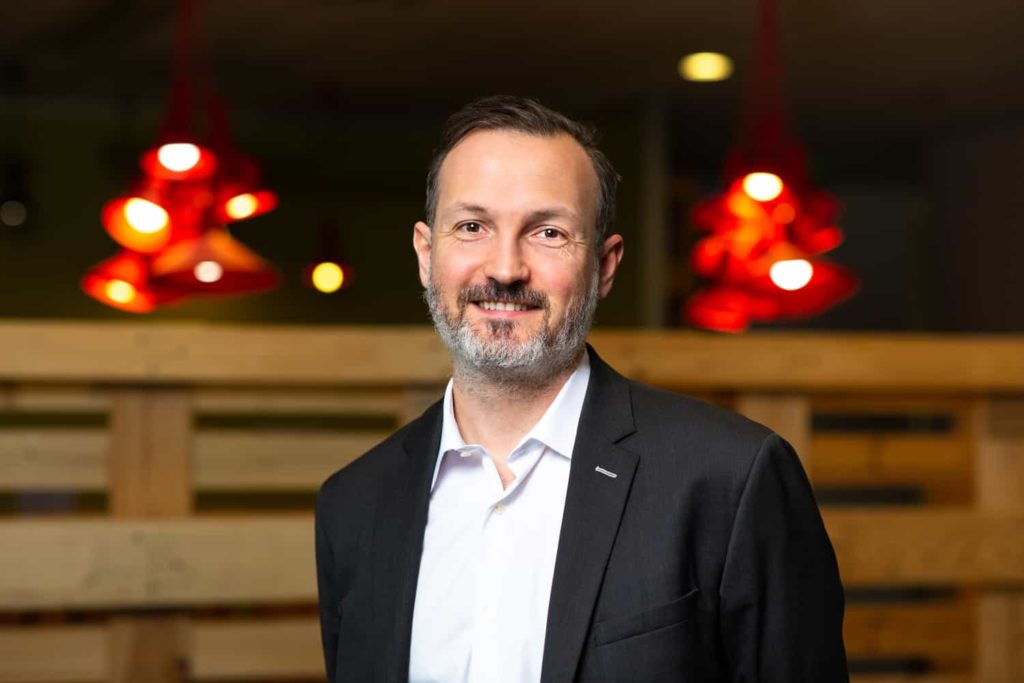
“We will continue democratising access to data for our more than 300 000 employees, while developing analytics solutions at the service of our business, for instance providing hundreds of our category managers with real-time view and insights on assortment, product and pricing. Data has become a core competence in Carrefour, at the same level as our ability to develop exceptional people, have the best merchandise or manage supply chain flows effectively and efficiently.
“And we will continue evolving to embed smart tech in our processes. The potential is huge and we have been catching up very fast during the last two years, with tech creating strong competitive advantages, for instance with our move2cloud, that reduces by two the time to develop new digital applications.”
Completing Perthuisot’s team and helping to lead this global effort is 37-year-old Global CTDO, Miguel Ángel González Gisbert, who joined Carrefour in September 2019 following almost a decade of consultative work at McKinsey & Company. “I know digital, but I also know how to translate strategic change imperatives into technology and data, and make a little bit of the bridge between the CIO, the CDO and the other CxOs of the company, which is what I did at McKinsey,” González explains. “And to some extent, it’s also a bit of what I’m doing here in translating an ambitious business transformation agenda into sound tech and data priorities and putting them into action, steering key projects.”
Carrefour is a highly distributed company: the operations in each country are pretty unique and distinctly local. It is González’s job as Global CTDO to create synergy across the local tech and data teams while making sure that the fundamental transformations Carrefour needs, happen, starting with the enablement of customer centricity.
He cites an example where the tech team in Brazil, say, could be working on a similar food traceability project to one in Spain, but where the CIOs concerned might not be actually aware of each other’s work. “They could obviously learn from each other, so it’s really creating this conversation on the one hand, while on the other, keeping very close to the executive direction and helping to accelerate the pace of the strategic transformation of this company with an obsession on improving customers’ lives. My role as Global CTDO is to orchestrate the technology and data at a global level.”
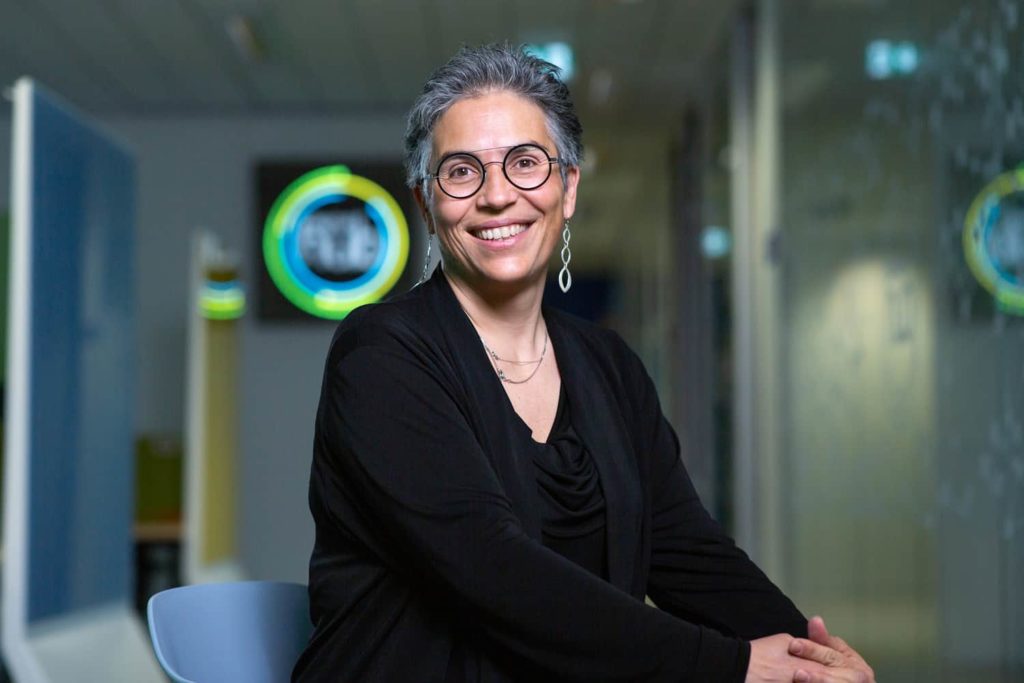
Customer centricity / 5-5-5
“Carrefour has initiated a deep cultural revolution called the ‘5-5-5’, which identifies five customer-centric principles across three themes: trust, service and proximity. For example, ‘The customer is the most important person in your day, always tell them ‘Yes’. In other words, every customer is unique and the satisfaction of every one of them has become an obsession at Carrefour. Indeed, just in 2020 we saw our Net Promoter Score (NPS) grow +20 points. Today the 5-5-5 is adopted by every BU in Carrefour, and it is perfectly clear to every one of our employees – including my digital team – that the number one priority is to make our customers happy,” Perthuisot explains.
“It is a very ambitious agenda, and my mission is to put technology and data at the service of the plan, and more broadly at the service of our customers and the 5-5-5,” González explains. “This is true across all technology and data layers: when it comes to offering a more delightful customer experience in our online platforms, implementing a performant e-supply and also bringing purposeful technology to our stores, where we leverage datatech and algorithms to propose personalised journeys and more fluid operations. And even when it comes to our tech foundations, we see the power of the cloud to innovate fast and deliver more services to our customers at a reduced cost.”
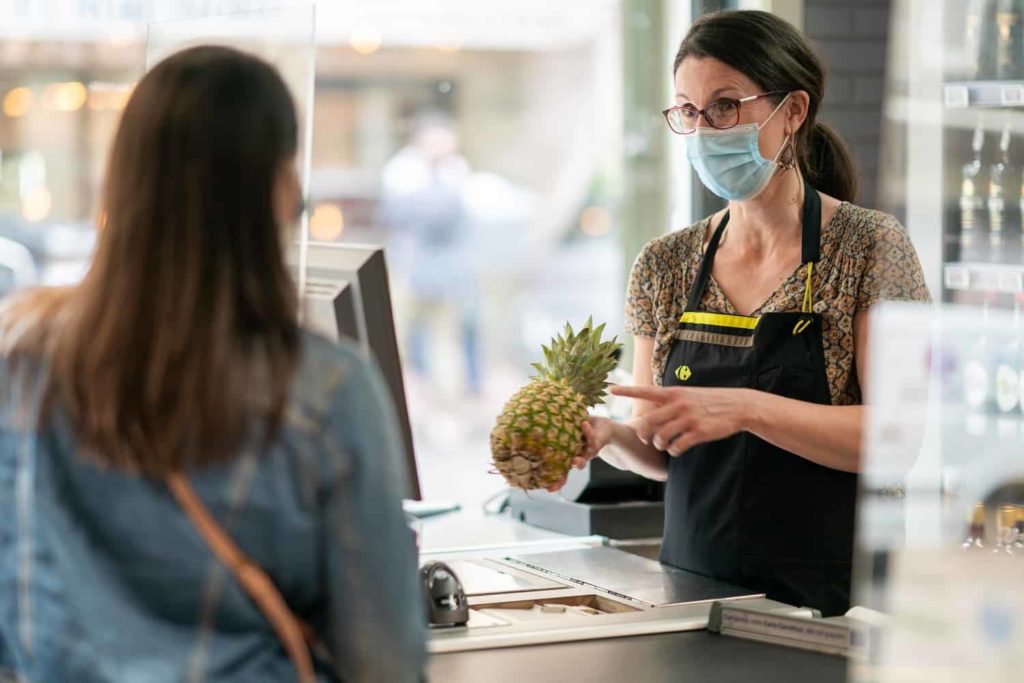
Modernising e-commerce platforms
Carrefour has some bold objectives around e-commerce. “We were late on that front,” Marina Fajardo Global Head of E-commerce Strategy at Carrefour explains. Three years ago, Carrefour was making a very small amount in e-commerce. “The plan here is to catch up and get to €4.2bn in food e-commerce GMV in 2022. Nonetheless, a great deal of the work has already been done. For example, in Brazil, we have increased our market share from 5% in 2018 to 18% today!”
Jan Pollier is Carrefour’s Digital and E-commerce Director in Belgium. “I’m in charge of a team of product owners that are developing and operating our web platform, as well as the mobile app we recently renewed,” he says. Pollier is also in charge of the different digital touch points with the customer.
Alexandre Bompard issued the clear instruction that Carrefour was to have only one e-commerce platform per country in 2018 and Jan reminds us of the importance of this moment. “Carrefour Belgium – as all the other countries – created ‘One Carrefour’: a single digital portal consolidating both e-commerce and marketing.”The website and the app are the visible side of e-commerce, the tip of the iceberg, however. Carrefour Belgium’s e-commerce operations – or e-supply- were running behind neighbouring countries – and so they looked to Food-X, a Canadian tech boutique that specialises in online grocery fulfilment.
“We were looking at the efficiency of our operations and more specifically the optimisation of the preparation and transport models,” Pollier explains. “We analysed Food-X and came to the conclusion that it was the most suited solution for Belgium. “Maple” [Carrefour codename for the project] is about putting in place a new installation within a large Carrefour warehouse, enabled by the Food-X software.
“They helped us design the interior of the warehouse that will be semi-automated, with conveyor belts and light mechanisation,” Pollier beams. “It is about using software in a very smart way, making sure the systems enable ultra-lean processes, perfectly suited to the food business.” Food-X has 20 years of experience within online groceries in Vancouver and are specialists in sustainable production. “They source a mainly organic assortment and so they really have that knowledge of fresh foods.”
This project is broader than putting in place the new warehouse, with Carrefour Belgium intending to optimise the end-to-end new business model. Project Maple will also enhance Carrefour Belgium’s last mile coverage, while improving the customer journey on the website. “This is the advantage of using an integrated fulfilment specialist. For instance the system is capable of adjusting delivery schedules dynamically depending on the progress of the picking schedule,” Pollier explains. This project clearly shows that the pace of Carrefour delivery has increased: “Delivering such a project in less than a year is very rock and roll. But we need to do it because Covid-19 is raising the standards of e-commerce and we have great ambitions for e-grocery.”
Back in France, where it all began, this e-commerce ambition is underlined by Valérie Legat, in charge of carrefour.fr, the 5th largest e-commerce site in the country. “I would say that currently, my focus is to help our customers simplify their shopping journey on our website, and make it personalised and omnichannel,” she explains “And when I say, for example, ‘simplify’, it means deploying all the algorithms we have developed in our data lab to predict what kind of products our customers are coming to shop for and making them available and easy to access. When I say ‘personalised’, it means offering different features depending on the profile of the client, but also different fulfilment services, like express delivery, which is one of our key ambitions for 2021. The last point is ‘omnichannel’. We have very large ambitions around the mobile app. We want our clients to have Carrefour in their pocket through their mobile app.”
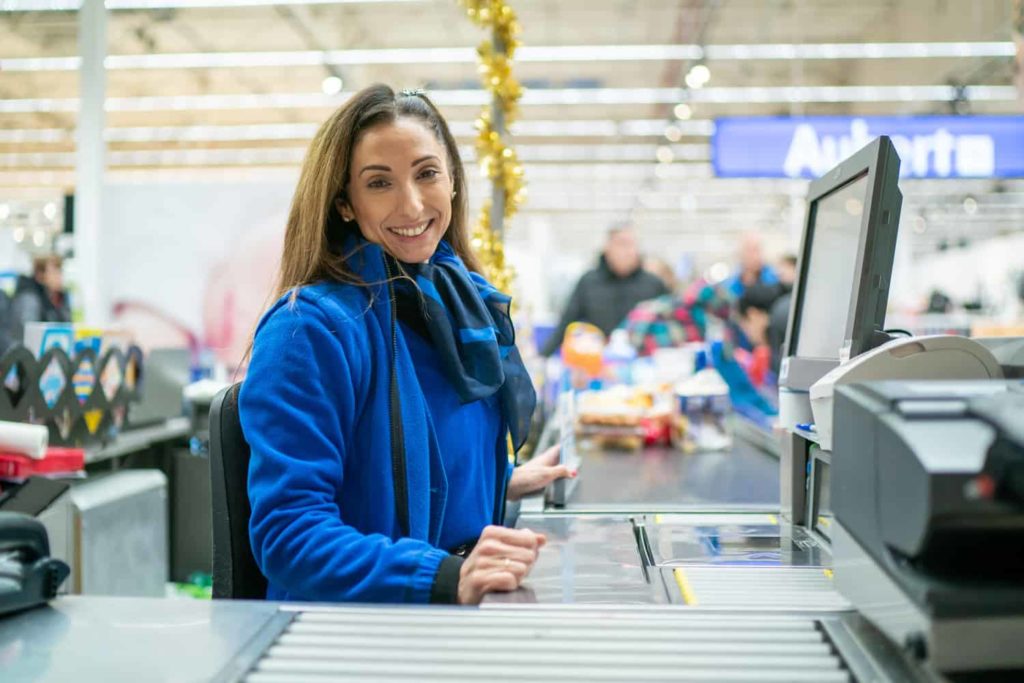
In-store innovation
However, ‘omnichannel’ also means putting technology at the service of the stores. Hervé Simonin has been working hard to change gear on this specific dimension. He oversees new businesses for the Group and for Carrefour France. This means not only leading the best portfolio of food e-commerce start-ups in France – including Greenweez, Dejbox, Quitoque, Potager City and Croquetteland – but also increasing the pace of change joining forces with tech start-ups like AiFi, that provide services on retail store automation.
So far, this has proven to be a challenging task. “As the organisation of Carrefour is international and multi-format, it is difficult to provide guidelines and assistance for this digital transformation while identifying the right technological choices to significantly reduce, on the one hand the heterogeneity of the solutions in the store and in a manner its obsolescence. But it is central that we manage to do it. This is precisely one of the roles of the Group: promoting a better sharing of information throughout the company,” he reveals.
“For example, there are about 70,000 tills in the shops across the Group with software that dates from several decades ago that is maintained by a heterogeneous set of tech companies. This creates a problem for a digital transformation as you need to be able to roll out new capabilities like payment, geolocation or fraud reduction quickly. Even if you come up with the best idea for a new service, the moment you are confronted with, and come up against, these stumbling blocks of heterogeneity and obsolescence, they are going to slow you down. But we are pushing hard to simplify.”
The strategy here is everything but turning the store into a collection of expensive tech gadgets: Carrefour wants to put technology at the service of operational excellence on the ground, in perfect connection with the 5-5-5 agenda and the need to delight customers every day.
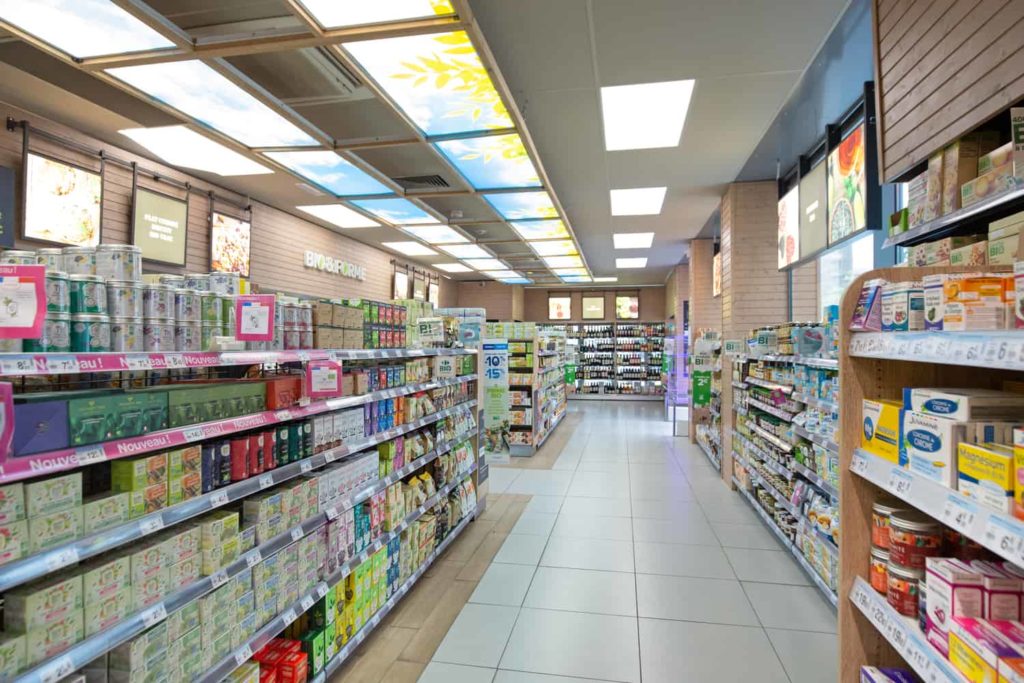
Nicolas Safis is the Group Innovation Director, and is bringing this mindset of customer-centricity into play, when it comes to turning prospective ideas into practical realities. “I think what’s important at Carrefour is that the tech and data transformation – especially when we talk about our stores – simplifies the life of our customers regarding touchpoints and fluidity and also our associates as we would not be able to provide our customers with the best service possible without ensuring that our collaborators have the right conditions, tools and processes required to do so.”
Today, the majority of Carrefour’s sales continue to happen in-store, and the Group sees a tech landscape that simplifies cashiers day-to-day tasks while aiming for a more omnichannel operation. “There is a fair amount of innovation going on there. We are leveraging the strong expertise of Spain in this area, where rockstars like José Antonio, Marian, Javier and Esther managed to develop one of the best Point of Sale (PoS) software suites in the Spanish market,” González, CTDO explains “And my colleague Laurence Azagoh is doing a wonderful job scaling-up these local capabilities to make them global so other countries can take advantage of them. We will hopefully have store systems that are better connected to the rest of the Carrefour information system so we can have more consistent data across digital and physical channels. We also intend to make it easier to provide a seamless experience between e-commerce and store, such as completing online baskets in store. And, finally, a platform that is multi-device, that enables the till, but also the non-food vendor or even the store manager. It is what we call ‘SmartPoS’,” he says.
Datatech, Google and the cloud
The entire transformation programme pivots around a data strategy that covers three distinct areas. Yann Barraud, Global CDO explains: “The first area is to use our data to propose more personalized and fluid customer experiences online and offline, before, during and after their shopping journey.” This is why Carrefour opened a data lab in partnership with Google three years ago. Carrefour data engineers have been working with Google AI experts to create together, new customer experiences. The lab’s Assortment Recommendation System is a great example – the algorithm identifies how to improve product offerings in each store. This system delivers a personalised in-store product selection: it is active in +150 stores in Paris, recommending over a hundred products to each store every month.
“The second area is to use our data to better operate our own machinery, our shops and warehouses to execute more effectively and reduce actual costs. For instance, our lab has been leading the charge in automating reporting and various BI [Business Intelligence] tools which has proven a tremendous time saver for HQ and operational staff allowing them to focus on value added tasks,” Barraud adds. At this very moment, the lab is preparing to put into production, a Daily Order Forecasting model for e-commerce activity to ensure better staff planning in preparation facilities.
“The third area is focused less on the internal needs of Carrefour and more on the needs of our industrial partners (CPG companies) where our strategy is to develop an open ecosystem in which Carrefour data is a solution for our growth and helps us identify areas of development in their different lines of business,” says Barraud, adding: “This is the purpose of DataShopper, a data platform designed to offer advanced KPIs about shoppers’ behaviour. Our partners get advanced insights allowing them to interact more effectively with customers, making their experience more pleasant and faster. This platform has been built using 100% cloud-native solutions, such as Looker, a next-gen cloud analytics tool, and BigQuery, Google’s cloud data warehouse.” Within DataShopper, Carrefour is building a 360, omnichannel view across all its geographies, in near real time, representing 50 petabytes of data processed each month, strictly respecting regulatory and data privacy and security requirements. The team built this platform in a few weeks, and went from 0 to general availability in less than 6 months.
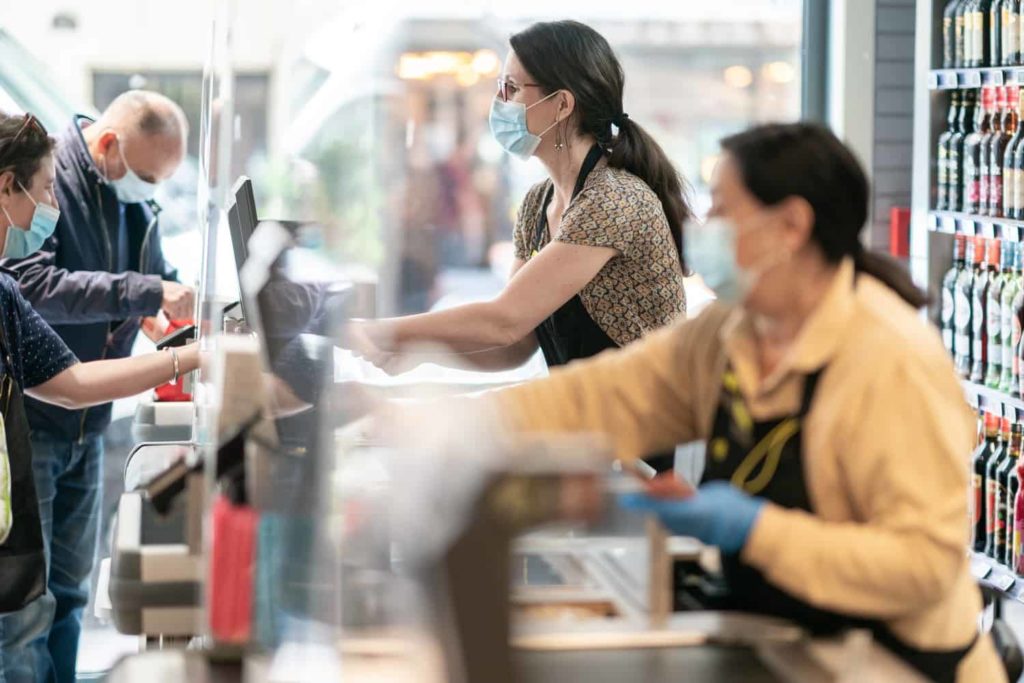
“They source a mainly organic assortment and so they really have that knowledge of fresh foods.”
This project is broader than putting in place the new warehouse, with Carrefour Belgium intending to optimise the end-to-end new business model. Project Maple will also enhance Carrefour Belgium’s last mile coverage, while improving the customer journey on the website. “This is the advantage of using an integrated fulfilment specialist. For instance the system is capable of adjusting delivery schedules dynamically depending on the progress of the picking schedule,” Pollier explains. This project clearly shows that the pace of Carrefour delivery has increased: “Delivering such a project in less than a year is very rock and roll. But we need to do it because Covid-19 is raising the standards of e-commerce and we have great ambitions for e-grocery.”
Back in France, where it all began, this e-commerce ambition is underlined by Valérie Legat, in charge of carrefour.fr, the 5th largest e-commerce site in the country. “I would say that currently, my focus is to help our customers simplify their shopping journey on our website, and make it personalised and omnichannel,” she explains “And when I say, for example, ‘simplify’, it means deploying all the algorithms we have developed in our data lab to predict what kind of products our customers are coming to shop for and making them available and easy to access. When I say ‘personalised’, it means offering different features depending on the profile of the client, but also different fulfilment services, like express delivery, which is one of our key ambitions for 2021. The last point is ‘omnichannel’. We have very large ambitions around the mobile app. We want our clients to have Carrefour in their pocket through their mobile app.”
In-store innovation
However, ‘omnichannel’ also means putting technology at the service of the stores. Hervé Simonin has been working hard to change gear on this specific dimension. He oversees new businesses for the Group and for Carrefour France. This means not only leading the best portfolio of food e-commerce start-ups in France – including Greenweez, Dejbox, Quitoque, Potager City and Croquetteland – but also increasing the pace of change joining forces with tech start-ups like AiFi, that provide services on retail store automation.
So far, this has proven to be a challenging task. “As the organisation of Carrefour is international and multi-format, it is difficult to provide guidelines and assistance for this digital transformation while identifying the right technological choices to significantly reduce, on the one hand the heterogeneity of the solutions in the store and in a manner its obsolescence. But it is central that we manage to do it. This is precisely one of the roles of the Group: promoting a better sharing of information throughout the company,” he reveals.
“For example, there are about 70,000 tills in the shops across the Group with software that dates from several decades ago that is maintained by a heterogeneous set of tech companies. This creates a problem for a digital transformation as you need to be able to roll out new capabilities like payment, geolocation or fraud reduction quickly. Even if you come up with the best idea for a new service, the moment you are confronted with, and come up against, these stumbling blocks of heterogeneity and obsolescence, they are going to slow you down. But we are pushing hard to simplify.”
The strategy here is everything but turning the store into a collection of expensive tech gadgets: Carrefour wants to put technology at the service of operational excellence on the ground, in perfect connection with the 5-5-5 agenda and the need to delight customers every day.
Nicolas Safis is the Group Innovation Director, and is bringing this mindset of customer-centricity into play, when it comes to turning prospective ideas into practical realities. “I think what’s important at Carrefour is that the tech and data transformation – especially when we talk about our stores – simplifies the life of our customers regarding touchpoints and fluidity and also our associates as we would not be able to provide our customers with the best service possible without ensuring that our collaborators have the right conditions, tools and processes required to do so.”
Today, the majority of Carrefour’s sales continue to happen in-store, and the Group sees a tech landscape that simplifies cashiers day-to-day tasks while aiming for a more omnichannel operation. “There is a fair amount of innovation going on there. We are leveraging the strong expertise of Spain in this area, where rockstars like José Antonio, Marian, Javier and Esther managed to develop one of the best Point of Sale (PoS) software suites in the Spanish market,” González, CTDO explains “And my colleague Laurence Azagoh is doing a wonderful job scaling-up these local capabilities to make them global so other countries can take advantage of them. We will hopefully have store systems that are better connected to the rest of the Carrefour information system so we can have more consistent data across digital and physical channels. We also intend to make it easier to provide a seamless experience between e-commerce and store, such as completing online baskets in store. And, finally, a platform that is multi-device, that enables the till, but also the non-food vendor or even the store manager. It is what we call ‘SmartPoS’,” he says.
Datatech, Google and the cloud
The entire transformation programme pivots around a data strategy that covers three distinct areas. Yann Barraud, Global CDO explains: “The first area is to use our data to propose more personalized and fluid customer experiences online and offline, before, during and after their shopping journey.” This is why Carrefour opened a data lab in partnership with Google three years ago. Carrefour data engineers have been working with Google AI experts to create together, new customer experiences. The lab’s Assortment Recommendation System is a great example – the algorithm identifies how to improve product offerings in each store. This system delivers a personalised in-store product selection: it is active in +150 stores in Paris, recommending over a hundred products to each store every month.
“The second area is to use our data to better operate our own machinery, our shops and warehouses to execute more effectively and reduce actual costs. For instance, our lab has been leading the charge in automating reporting and various BI [Business Intelligence] tools which has proven a tremendous time saver for HQ and operational staff allowing them to focus on value added tasks,” Barraud adds. At this very moment, the lab is preparing to put into production, a Daily Order Forecasting model for e-commerce activity to ensure better staff planning in preparation facilities.
“The third area is focused less on the internal needs of Carrefour and more on the needs of our industrial partners (CPG companies) where our strategy is to develop an open ecosystem in which Carrefour data is a solution for our growth and helps us identify areas of development in their different lines of business,” says Barraud, adding: “This is the purpose of DataShopper, a data platform designed to offer advanced KPIs about shoppers’ behaviour. Our partners get advanced insights allowing them to interact more effectively with customers, making their experience more pleasant and faster. This platform has been built using 100% cloud-native solutions, such as Looker, a next-gen cloud analytics tool, and BigQuery, Google’s cloud data warehouse.” Within DataShopper, Carrefour is building a 360, omnichannel view across all its geographies, in near real time, representing 50 petabytes of data processed each month, strictly respecting regulatory and data privacy and security requirements. The team built this platform in a few weeks, and went from 0 to general availability in less than 6 months.
As Global Chief Data Officer, Yann is not only a tech partner to business when it comes to data, but also the person that helped to accelerate Carrefour’s move2cloud program. Such a dual role was deliberate. “In Carrefour, we do data in the cloud by default. It enables better time to market, it is more scalable and we get access to more innovative services. It is also cheaper. Data is such a fundamental part of Carrefour’s plans and so it was important to get a partner (Google) very expert in that field. I don’t know any other data warehouse solution in the market capable of bringing the level of performance of BigQuery at that price.”
“Besides defining the data strategy and supporting countries in the execution, I have the chance to contribute to the delivery of several data projects with the potential to generate a serious performance shift for Carrefour,” Barraud explains. Carrefour has implemented a new big data platform, Eagle, which is 100% cloud-based, to equip all their geographies. The first use case built on top of this platform was completed in Carrefour Romania. Eagle enables them to better understand their customers and to better serve them: the platform gathers a large volume of receipts (approximately 550k a day) allowing Romanian marketing experts to analyse the ticket contents for any combination of stores, dates and customers. This means that in Romania, they can now identify segments of customers at a store-level, whether they are “promo hunters”, “early adopters”, “premium” or “impulsive buyers”.
Any major digital transformation, and they come no bigger than Carrefour, requires a solid technological infrastructure upon which the company can evolve at pace. This is where cloud plays a major role.
“Back in 2018, the company had no clear position about cloud and more specifically public cloud,” Yann reveals “End 2019, the strategy became clearer, and extremely simple: We were targeting ‘public cloud first’, moving away from traditional data centres. Back in 2018, his strategy was accelerated by the signature of our partnership with Google.” Hence, the company shifted and became more aggressive on its cloud migration, evolving from less than 5% of apps in the public cloud to 25% at the end of 2020. This bold movement towards the cloud is also motivated by the willingness to increase the pace of innovation, which is today happening in the cloud by default. For example, the emergence of “no code” solutions, like AppSheet, allowing anyone to build applications in minutes. For instance, Carrefour on-site maintenance teams recently built a simple application to plan interventions and generate service reports.
“Obviously, this did not come in a glimpse. As for every change, we had to be convinced that the cloud shift was beneficial for the Group. In addition to making it clear and simple, we also showed, based on facts, that the cloud was bringing multiple benefits besides innovation and speed, at almost every level of the company. We explained how cloud applications helped us in our scalability and performance – for instance our ability to absorb the traffic peaks during the first Covid-19 lockdown – and how easy and integrated security and monitoring were and that the shift was bringing tangible financial benefits,” adds Barraud. For example, closing two data centres in France in 2019 generated considerable savings.
Using cloud-based solutions also allowed Carrefour to gain momentum. For instance, the company developed and deployed, in only 6 days, a new e-commerce channel during the first COVID pandemic – “Les Essentiels”. This would have been barely possible with a traditional toolset.
Once those benefits were made clear and accepted, the countries started accelerating their journey to the public cloud. For example, in Poland, in 2020, 10 apps were shifted to public cloud. In 2021, the target is multiplied by three, targeting more than 30 applications.
“Google was interesting as a cloud partner, because, besides the strength of GCP in data and software engineering, mid-2018 when the partnership with Google started, Google was still an emerging force in the cloud market, and this helped us to get a good balance from the very beginning,” González explains. “They bring a lot of expertise and scale on technology and infrastructure and we bring a lot of expertise and scale on retail. The move2cloud does not stop here. After seeing the business value, we decided to increase the level of ambition: we want to be a 100% cloud company in a few years. This may seem normal nowadays, but it is in fact totally crazy when we consider the starting point back in 2018.”

Nicolas Forgues is the CTO of Carrefour France and he further underlines the touchpoints of the global strategy, at a local level. “The strategic vision of Carrefour France is to regain market shares in the bricks and mortar world of retail including historical formats like hyper, whilst at the same time significantly increasing its online leadership with the ambition of becoming – in line with the vision of the Group – the responsible e-commerce leader, incorporating the fields of sustainable development and social commitments specifically. This means, in the respect of environmental resources, paying particular attention to everything that contributes to the reduction of our carbon footprint. For example, Google has a very low environmental impact with a PUE [Power Usage Effectiveness, a ratio calculated by dividing the total of energy required at the level of the data centre by the part dedicated to computing only] of close to 1.1, hence lowering our own global carbon footprint.”
Sustainability through digital
Sustainability is a very strong lever of Carrefour’s strategy. One of the central ideas is to play a leadership role in sustainable food consumption, as well as food production. Basically, it will see the company working very closely with producers, supporting them to make it more sustainable while improving food quality at a fair price. Carrefour wants to be the leader in terms of the “food transition” that is happening across the globe – healthy, fresh, organic and local food – and tech is enabling this ever-increasing influence of Corporate Social Responsibility (CSR). Bertrand Swiderski is in charge of sustainability for the Group Carrefour. “It’s my role to drive the change inside of our company, to drive our business, to make sure that our business is sustainable enough. And it’s creating a win-win-win situation. It’s a win-situation for Carrefour, a win-situation for our consumer and a win-situation for our planet and for our society.”
The CSR drive at Carrefour is driven by five priorities. “The first is that we have to increase the sale of organic products,” Swiderski explains. “The second is making sure our brand, the Carrefour brand, is healthy and responsible. The third one is to reduce food waste in our operation, and also to help consumers to reduce food waste. And then, we still have to work on reducing plastic, reducing packaging, and we’ve made a tremendous commitment to that. We want to reduce by 20,000 tonnes the quantity of packaging before 2022. And finally, we still have to work on sourcing and delivering local products.”
Sustainability and tech are deeply linked on several of Carrefour’s projects. For instance, Carrefour has developed a strong partnership with Too Good To Go (TGTG) since 2019. Carrefour has helped to save ~2.5 millions of meals (i.e., 2 400+ tons of food) across Europe (France, Spain, Italy and Belgium) granting access to its customers to discounted baskets through the TGTG app. To make it happen, both store and warehouse staff are equipped with mobile devices to pinpoint products about to expire, constitute baskets and sell them.
The company’s societal responsibility is also visible on its digital assets. For instance, during the mid-2020 lockdown, Carrefour decided to open its marketplace in France with Mirakl, granting free-of-charge access to small producers, micro enterprises and SMEs so they can reach their customers during the sanitary crisis, starting their e-commerce business and reaching Carrefour’s customers without any marketing effort.

Customer centricity at the core of technology
Of course, with increased digitalisation and the pools of sensitive data that will be generated, at the scale of Carrefour’s transformation, there are always going to be increased risks of cyberattacks and fraud.
Laurent Amsel is the Global Chief Information Security Officer (CISO) at Carrefour. Although solid security measures were in place before his appointment, he has been tasked with adding an added protective layer around the new offerings and operations that underpin the transformation programme. “The more and more digital we become, the bigger the surface area that’s exposed,” he explains. “That means there are more and more targets for any attackers. Without e-commerce, there is no website to attack.”
Carrefour has already started the transformation of its cyber-security. Amsel leads an international community of CISOs that work together to share best practices on a local level while working together on global incidents. Infusing an agile mindset to this team of cyber experts, without losing on resilience, is key. “Unusable security is NOT security. The point is that if our employees and our customers do not understand, do not adopt, do not embrace cybersecurity, the effort will be pointless. They will find a way to oversmart the system. It is really important that we offer solutions to help our business instead of being a blocker,” Amsel says.
Customer-centricity comes back again and again, even when it comes to the deeper layers of the technology stack. The ultimate proof can be found in support, back-office heavy functions like finance. Another major partner of Carrefour is SAP, which is conducting a huge major program to modernise the backbone of Carrefour’s financial operations.
Finance at Carrefour is undergoing a major transformation, in part to provide vital real-time intelligence to support operations. “We have to be sure it will benefit the end customer too,” explains Claire Noel du Payrat, Group Financial Control Director at Carrefour. “OK, so we are a support function and we will remain a support function, but operations need us, so they can be better at decision making. So, we provide them with the right decisions at the right moments through more, real time intelligence. And not only real time information, but also the insights into how to use it. If we want to improve decision making, we have to use this real time data, and so that’s why we have been utilising SAP HANA, which gives us an appropriate configuration and structure of data, with the appropriate BI and additional tools.”
“Coffee [Carrefour’s codename for the project] is a massive program of change, unique in the sense that we are modernising our financial and indirect procurement core in 9 countries in less than two years, while at the same time standardising and improving our processes and rules to work better as a Group. It is an incredible ambition and a program that will lead to a significant positive impact for Carrefour.”
Besides security and finance, customer centricity is also visible in Carrefour’s product traceability efforts, such as Walmart in the US, where Carrefour has been pioneering the usage of blockchain to track food product information, and has even extended its use to textiles, with extraordinary rigour: “immutable”, “tamper-proof” and “secure” are just some of the unique properties associated with this technology. Garance Osternaud, in charge of Carrefour’s blockchain program, believes that “Customers demand more and more transparency. For them to trust us, we have decided to play an open game, granting them access to certified information along the full value chain, from the producer to the processor and from the farm to the fork. Thanks to blockchain, customers can know the farmer that harvested their tomato, get the proof it was grown with no herbicides, locate the farm to check the origin and track precisely delivery dates at the level of each individual lot. We have already blockchained 37 quality lines in 7 countries. The point is that we do not do blockchain because it is trendy or technologically cool, but because it provides perfect visibility and assurance to our customers.”
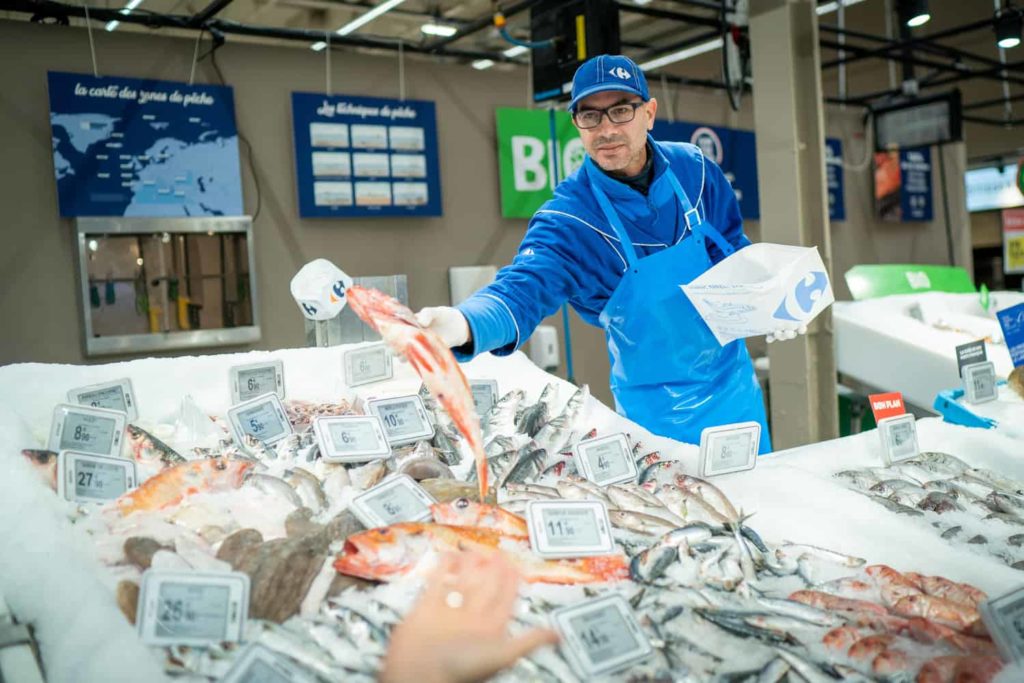
A programme of global change
It is clear through the multiple examples that the tech transformation of the company is truly global. All Carrefour countries and business lines – physical stores, e-commerce, retail, financial – are contributing to a coordinated wave of change, with different flavours and unique ideas coming together around common principles and vision.
The global character of the transformation is really visible in Brazil, where Carrefour operates three major businesses: traditional retail, wholesale with Atacadão and a strong financial services network with Banco Carrefour. The transformation is accelerated further with Carrefour’s acquisition of Grupo BIG, Brazil’s third-biggest food retailer, strengthening Carrefour presence there. This was the largest acquisition since Alexandre Bompard’s arrival and the transaction prices Grupo BIG at an enterprise value of approximately €1 billion. By combining both Carrefour Brazil and Grupo BIG, Carrefour Brazil has gross sales of about R$100bn (€15bn), operates more than 700 stores and employs around 137,000 people.
Overseeing the digital transformation of the retail segment of Carrefour in Brazil is CIO Paulo Farroco, who outlines some of the challenges faced by the Group. “So, Carrefour Brazil is a 45-year-old company and it faces many challenges in reinventing itself,” he says. “The tech roadmap is based on joining the physical and digital stores together, and delivering that omnichannel experience to our customers. We really want to be a company where the customer is at the centre of all our decisions. Carrefour Brazil is launching its new e-commerce platform on Carrefour.com.br, developed by the e-commerce software company VTEX, and which aims to achieve positive impacts across the business. High-level levels of performance are expected in order management, vendors’ marketplace powered by Mirakl, and omnichannel services that connect the online operation to its bricks-and-mortar stores. The new digital platform will be the basis to scale and evolve the business in the short and long term as Carrefour Brazil gains the same level of maturity as markets where e-commerce operations, especially food, are very mature, as in European countries.”
Back in 2007, Carrefour acquired Atacadão, which became the cash & carry business unit of Carrefour Brazil. 15 years later, there is strong evidence that this move was a very good strategic decision at that time, as it enabled Carrefour to diversify the type of formats available for their customers in Brazil. Since the acquisition, Atacadão has represented a major growth accelerator for Carrefour in Brazil. Many of the customers of Atacadão are B2B customers (like hotels, restaurants or smaller distributors). Another singularity of Atacadão is its strong culture. The company encourages commitment, obligation to speak up and drive and strives in permanence to develop its talents. Simplicity and transparency are also core values of the company, that works hard every day to remain customer focused, with a business model that is “no frills” and an approach of service that is extremely humble and low profile, with no other goal than satisfying customers.

In 2019, Roberto Müssnich, the CEO for Atacadão, met CotaBest’s founders Vanderlei Junior and Fernando Coutinho to explore if CotaBest – which offered an open-ended B2B grocery marketplace service at that time – could include Atacadão as one of its vendors. CotaBest has an astonishing origin starting out as a simple restaurant. The co-founders noticed it was particularly complex for them to analyse and compare the offerings coming from the different food providers of their restaurant. That is why, Junior and Coutinho created an online platform to aggregate, simply and quickly, the various offers. And it proved to be a great success when they opened the service to other restaurants.
When Roberto Müssnich met with them, they all realised something much bigger could be done together. Müssnich decided that Atacadão should invest in CotaBest. CotaBest and Atacadão became partners and together explored the opportunity of building Atacadão’s e-commerce platform (despite the huge success of the company, its digital presence was very limited until 2020) and sophisticating the B2B marketplace, in particular in its ability to compare prices coming from different vendors “That’s the most interesting part, where you can choose between them,” Coutinho explains. “That is quite a novelty for this market and, at the end, creates significant value for customers. And for us having a new e-commerce and marketplace platform is really powerful.”
Carlos Mauad has been CEO of Carrefour Bank, in Brazil since January 2019. Mauad’s mandate included running a digital transformation on the entire company. “We pretty much redesigned the entire company in terms of work dynamics to make sure we could play in this highly competitive arena which is Brazil,” he explains. “We have a very concentrated banking market, so there are a lot of opportunities for new players, for instance in the field of means of payment, critical to ensure the frequency of the retail relationship. At this point, it’s a very hot market to be in,” Mauad explains. “And we’re still growing that because we have the advantage of being integrated in a huge ecosystem here, which is Carrefour and Atacadão. For example, the ‘APAG’ (Atacadão Pagamentos) project has initiated synergies between Carrefour bank and Atacadão’s in proposing payment terminals for Atacadao’s B2B customers that we distribute in our stores. On top of that, we will offer banking services to store customers that do not have a credit card yet. In this project, our aim to become a sub-acquirer is an important lever in our diversification.”
New mindsets and behaviours
A commonly cited challenge to a transformation of any kind and scale is the establishment of a positive and productive mentality among the workers delivering, and adopting, the new practices and tools. At Carrefour, that challenge addresses a tech team of over 4,000 and hundreds of data professionals across the Group.
Carrefour’s transformation is a meld of in-house expertise and partnerships going back to 2018, when Publicis Sapient and Carrefour joined forces to define a new e-commerce tech strategy, harnessing digital to regain its leadership in grocery in France by enabling more efficient and productive ways of working. And speed is of the essence as the clock is well and truly ticking with 2022 as the deadline, set back in 2018, for delivering Carrefour’s transformation programme.
Speed is also a key challenge Carrefour Taiwan had to face when COVID crisis struck, at the beginning of 2020. Due to high traffic peaks, Taiwan’s historical e-commerce platform was unable to scale enough. Moving to a more responsive and agile platform was the challenge. And it needed to be done in a matter of months. Selecting Salesforce Commerce Cloud allowed Carrefour to constrict the implementation duration (in less than one year!) without any compromise on business features. The same approach was chosen for Carrefour Italy (Salesforce) but also Brazil and Argentina, with the only difference of leveraging VTEX, a LatAm pure player.
Mindsets and behaviours are evolving in local tech operations, but also for the Group function. The role of the Group is to serve the countries, and not the other way round. This is in line with the “inverted pyramid” principle that is becoming mainstream across the company: senior managers serving their managers and managers serving in turn their associates, whose only mission is to serve the customers to make them happy. This is very different from a very traditional organisation where orders come top-down. In the new Carrefour, the customer is the boss, and the organisation is changing to become responsive to these requests. The technology function and the data function at Carrefour are no different: Carrefour wants an IT and data departments at the service of the business, be it e-commerce or stores, merchandising or supply, finance or HR. “I think this kind of change requires more than ever a spirit of servant leadership,” González, CTDO explains. “We are inverting the pyramid. I exist to serve my tech and data colleagues in countries, so then they can better serve our customers. I am here to listen to them and create the best conditions so they can do their jobs better.”
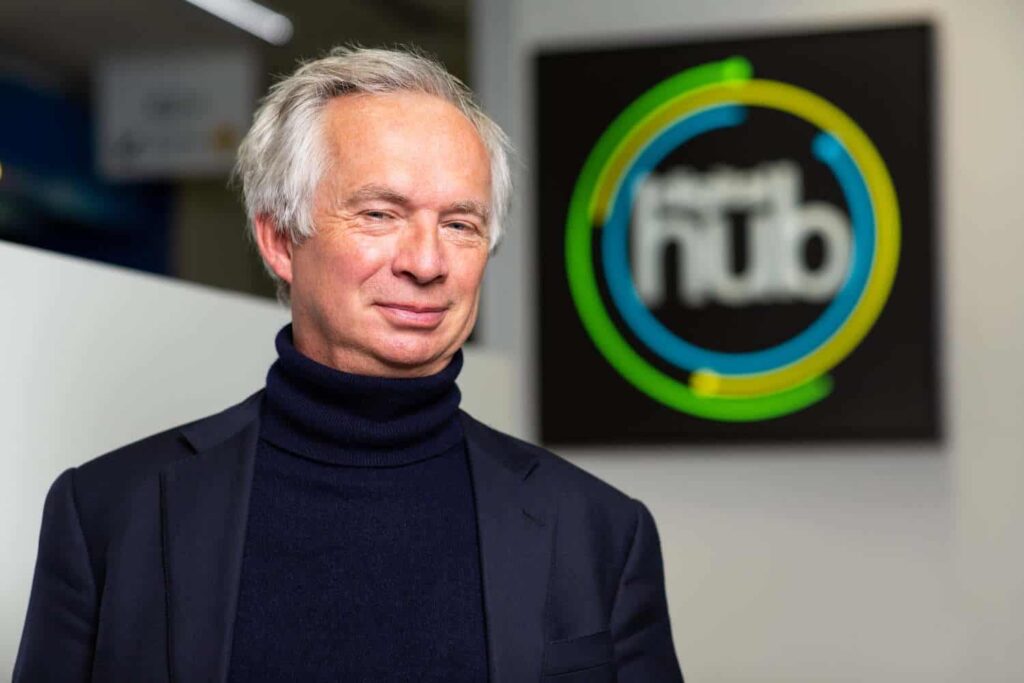
An example of this is the effort made by the Group to provide cost transparency across a series of mutualised IT services like infrastructure or digital workplace. End 2019, the Group received a lot of feedback from countries about their need to have more information and explanation about the set of globally mutualised tech services. Thus, the Group decided to clarify the mechanisms for making these costs visible with a double objective: to give full transparency to countries, but also to make them fully accountable on the responsible consumption of the mutualised services.
Thibaud Cainne, Global Head of Tech Governance, gives another example of the changes done to simplify the management of the technology function. “Reporting on country tech project portfolios and investment committees to approve IT projects were somewhat cumbersome in the past. In order to reduce complexity of these processes, we decided to split work with countries in two: We maintained strong instruction on large projects and made countries more accountable on the rest, what we call ‘tactical envelopes’, while maintaining global visibility on the budgets and strategic areas of change with a semi-automated global tech dashboard.” This approach makes it possible to answer both the need of agility to countries and the need to maintain strict strategic direction based on the Group objectives without creating too much bureaucracy.”
An important part of the new way of thinking is the establishment of a more expressive working culture where employees are encouraged to speak up about their work and the wider industry and trends. “We don’t want our people to be shy in speaking up about tech or data,” says González. “We want Carrefour to be the coolest place to be today and we want our employees to feel happy and proud with regards to their work.”
This is the goal of Horizons by Carrefour. Nobody thought Carrefour could openly speak about cutting-edge digital innovations, but the important point is that change is happening, and people are not shy to speak tech or data anymore. Horizons, launched in October 2020, is Carrefour’s digital retail blog to share its initiatives in e-commerce, data, digital in-store, tech and sustainability, worldwide. “Our colleagues from all over the world are proud to share their experiences and their projects on Horizons. We are receiving very positive feedback from both employees and digital professionals that visit our blog on a regular basis! It is a great way to communicate about Carrefour’s digital transformation while getting all of our countries onboard,” says Zoe Bordelon, project manager in charge of Horizons.
This digital transformation, and the extensive work being carried out at Carrefour relies heavily on the human touch and its rich pool of talent. “We are making a very strong effort to bring onboard the best talents in tech, whether it is developers, data scientists or architects,” explains González. “Our aim is to find and attract the best digital experts! For example, we are proud to have among us top leaders such as Alessandra Grendele, CIO of Carrefour Italy, and Gabriela Stanica, CIO of Carrefour Romania, who both joined us pretty recently. There is a very rich set of digital and tech talent here at Carrefour making all this happen. For me, it’s a constant source of inspiration that is really helping to change this company.”
An example of this is the effort made by the Group to provide cost transparency across a series of mutualised IT services like infrastructure or digital workplace. End 2019, the Group received a lot of feedback from countries about their need to have more information and explanation about the set of globally mutualised tech services. Thus, the Group decided to clarify the mechanisms for making these costs visible with a double objective: to give full transparency to countries, but also to make them fully accountable on the responsible consumption of the mutualised services.
Thibaud Cainne, Global Head of Tech Governance, gives another example of the changes done to simplify the management of the technology function. “Reporting on country tech project portfolios and investment committees to approve IT projects were somewhat cumbersome in the past. In order to reduce complexity of these processes, we decided to split work with countries in two: We maintained strong instruction on large projects and made countries more accountable on the rest, what we call ‘tactical envelopes’, while maintaining global visibility on the budgets and strategic areas of change with a semi-automated global tech dashboard.” This approach makes it possible to answer both the need of agility to countries and the need to maintain strict strategic direction based on the Group objectives without creating too much bureaucracy.”
An important part of the new way of thinking is the establishment of a more expressive working culture where employees are encouraged to speak up about their work and the wider industry and trends. “We don’t want our people to be shy in speaking up about tech or data,” says González. “We want Carrefour to be the coolest place to be today and we want our employees to feel happy and proud with regards to their work.”
This is the goal of Horizons by Carrefour. Nobody thought Carrefour could openly speak about cutting-edge digital innovations, but the important point is that change is happening, and people are not shy to speak tech or data anymore. Horizons, launched in October 2020, is Carrefour’s digital retail blog to share its initiatives in e-commerce, data, digital in-store, tech and sustainability, worldwide. “Our colleagues from all over the world are proud to share their experiences and their projects on Horizons. We are receiving very positive feedback from both employees and digital professionals that visit our blog on a regular basis! It is a great way to communicate about Carrefour’s digital transformation while getting all of our countries onboard,” says Zoe Bordelon, project manager in charge of Horizons.
This digital transformation, and the extensive work being carried out at Carrefour relies heavily on the human touch and its rich pool of talent. “We are making a very strong effort to bring onboard the best talents in tech, whether it is developers, data scientists or architects,” explains González. “Our aim is to find and attract the best digital experts! For example, we are proud to have among us top leaders such as Alessandra Grendele, CIO of Carrefour Italy, and Gabriela Stanica, CIO of Carrefour Romania, who both joined us pretty recently. There is a very rich set of digital and tech talent here at Carrefour making all this happen. For me, it’s a constant source of inspiration that is really helping to change this company.”
